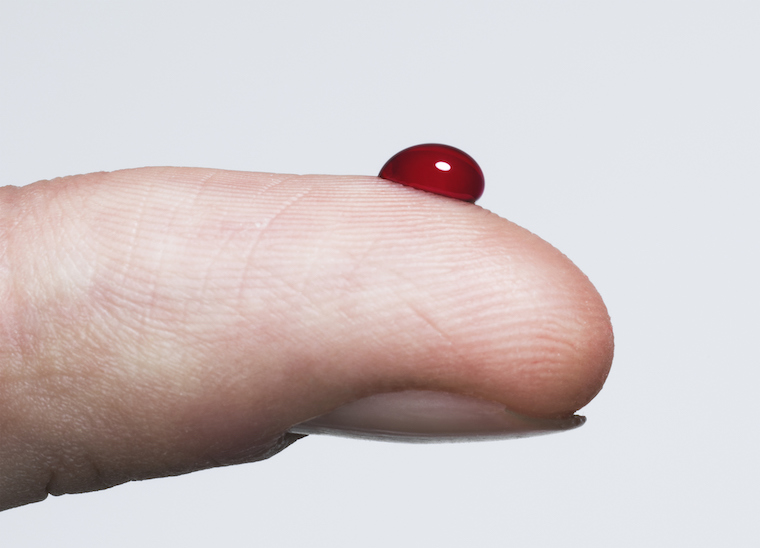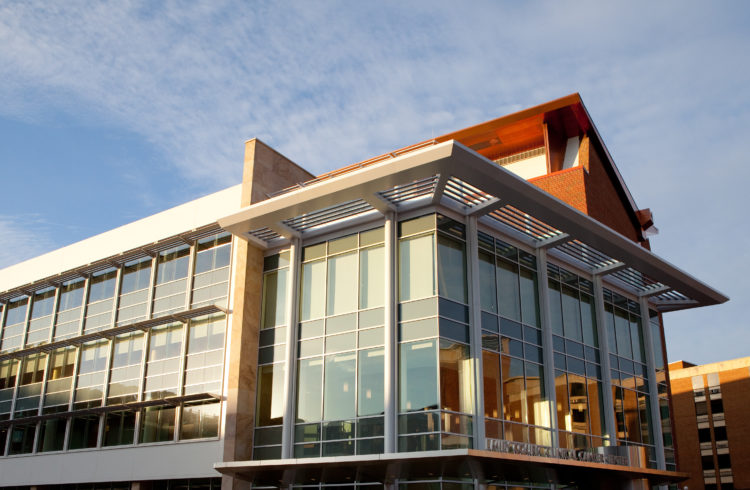
Blood
Pioneering research into how our bodies manufacture the cells that make blood has moved us closer to regrowing tissues and organs. The findings also may let doctors grow the cells for transplantation into people to battle cancer, blood disorders and autoimmune diseases.
Researcher Karen K. Hirschi, PhD, of the Department of Cell Biology and Cardiovascular Research Center at the University of Virginia School of Medicine, has developed a simple and efficient way to generate “hemogenic endothelial cells.” These cells are the first step in the production line of blood cells, and Hirschi’s new findings provide a blueprint for creating them outside the body.
“By studying how hemogenic endothelial cells develop normally, we gain insights needed to generate them in the lab,” Hirschi said. “Now that we have established a method to produce human hemogenic endothelial cells outside of the body, we will continue to improve their production and function as we learn more about the mechanisms that promote their normal development.”
Building Blood-Making Factories
Hirschi’s latest work, published in a pair of scientific papers, offers important insights into how hemogenic endothelial cells form and how they ultimately give rise to the cells that directly manufacture blood throughout our lives.
Writing in the prestigious journal Science, she and her team reveal a key trigger that causes the endothelial cells to “transdifferentiate,” or turn into blood-making factories, during embryonic development. These blood-making (i.e. hemogenic) endothelial cells generate hematopoietic stem and progenitor cells (HSPCs) that have long been used for the treatment of cancer and other diseases. Typically, they are taken from sources such as an individual’s bone marrow, but doctors would like to be able to manufacture them quickly and easily for patients on demand. “Generating human hemogneic endothelial cells in the lab from each patient that needs HSPC is the first step toward patient therapies for blood disorders,” Hirschi said.
In a paper published nearly simultaneously in Cell Reports, Hirschi unveils a blueprint for creating the hemogenic endothelial cells, the source of HSPCs, outside the body. The secret is a substance called retinoic acid. You may have heard of retinoic acid in association with beauty products, but in this case its responsibilities include triggering genes to cause “hematopoietic transition” – to put more vascular endothelial cells in the business of making blood by producing HSPCs.
The new insights provided by the work “will improve our ability to apply developmental insights to the generation of distinct endothelial cell subtypes for tissue engineering and regenerative medicine,” the researchers write in their new paper. “In addition, our system could likely be developed further to optimize the generation of transplantable HSPCs from human hemogenic endothelial cells for clinical therapies.”
The approach offers several advances over existing means, including being quicker and less expensive, the researchers note.
“We hope our continued efforts will move us closer to treating both vascular and blood disorders,” Hirschi said. “These studies highlight the importance of basic cell and developmental biology research as a foundation for devising strategies for patient-specific clinical therapies.”
Hirschi was recruited from Yale in 2019 to join the faculty in the Department of Cell Biology, which has long been interested in addressing how embryos develop and applying this basic knowledge to the repair and regeneration of damaged tissues and organs.
Findings Published
The Science paper was authored by Dionna M. Kasper, Jared Hintzen, Yinyu Wu, Joey J. Ghersi, Hanna K. Mandl, Kevin E. Salinas, William Armero, Zhiheng He, Ying Sheng, Yixuan Xie, Daniel W. Heindel, Eon Joo Park, William C. Sessa, Lara K. Mahal, Carlito Lebrilla, Hirschi and Stefania Nicoli. The work was supported by the National Institutes of Health (grants F32HL132475, U54DK106857, 1K99HL141687, R01HL130246, R56DK118728, R01HL146056. R01HL128064, R01DK118728 and R01GM049077) and the American Heart Association (grants 19PRE34380749 and19TPA34890046).
The research team responsible for the Cell Reports paper consisted of Jingyao Qiu, Sofia Nordling, Hema H. Vasavada, Eugene C. Butcher and Hirschi. That work was supported by NIH grants HL128064, U2EB017103, R01-AI130471 and R01-CA228019; CT Innovations grant 15-RMB-YALE-04; Department of Veterans Affairs Merit Review award I01BX002919; the Swedish Society for Medical Research; and a Stanford Dean’s Fellowship.
To keep up with the latest medical research news from UVA, subscribe to the Making of Medicine blog.



